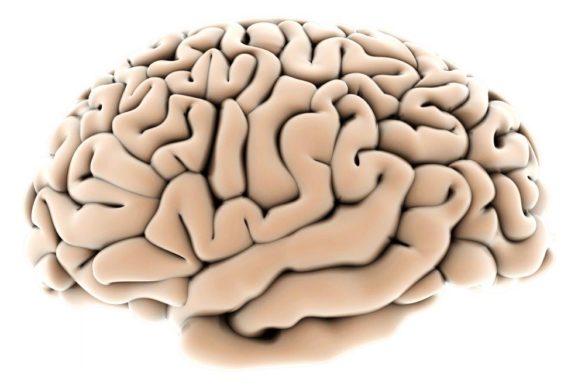by Maria Cordier, François-Xavier Borruat, Philippe Maeder, Patrik Michel
A 74-year-old man with mild cognitive impairment since 2007 due to biopsy proven cerebral amyloid angiopathy, presented in January 2012 with complaints of progressive visual loss over 6 months. He was known for alcohol dependence treated since 2010 with disulfiram 400mg daily. According to him and his wife, he stopped any alcohol use in 2009 and continued to smoke 10 pipes a day.
Neurological examination showed severely decreased visual loss, with the patient being only able to count fingers at 1 meter. Colour vision was markedly abnormal in both eyes: 0/13 on Ishihara pseudoisochromatic plates. Visual fields were normal to confrontation, but computerized visual fields examination showed a large central scotoma in both eyes (Figure 5). The retina was normal and a slight temporal pallor of the optic disc was present in both eyes. Besides, the patient showed stable cognitive deficit with constructive apraxia, impossibility to perform a clock-drawing, and a Mini Mental State Evaluation of 27/30.
Magnetic resonance imaging showed several cortical hypointense lesions on T2 star sequences (compatible with chronic cortical microbleeds) (Figure1), and normal optic nerves (Figure 2). The optic chiasm showed an intrinsic hypersignal on T2 weighted images (Figure 3) with minimal focal contrast uptake on T1 with Gadolinium (Figure 4). Pattern visual evoked potentials revealed delayed P100 in both eyes.
Thorough workup for causes of optic neuropathy including inflammatory and vasculitis markers, liver function tests, vitamin levels, serology of Lyme and Syphilis, carbohydrate deficient transferrin and alcohol concentration were negative. Leber’s optic neuropathy test was not performed. Chest x-ray and lumbar puncture were already normal in 2007 and not repeated (although sarcoidosis in 2012 is not ruled out by a normal chest x-ray in 2007). We concluded that the most likely diagnosis was toxic optic chiasm neuropathy due to disulfiram treatment.
Comment by the authors:
Toxic optic neuropathy is a rare but well described complication of disulfiram treatment which occurs in the absence of concomitant alcohol consumption. We are not aware of optic chiasm lesions in patients treated with disulfiram. Such an intrinsic lesion hyperintense on T2 sequences may be explained by toxic oedema or Wallerian degeneration.
Disulfiram was stopped. Six months later the patient showed some improvement of visual function: visual acuity was 1/10 difficult in both eyes, colour vision was 1/13 in the left eye (0/13 in the right eye), and the central scotoma had markedly diminished in both eyes (Figure 5).
References:
Bessero AC, Daeppen J-B, Borruat F-X. Neuropathie optique lors d’un traitement par disulfirame, J. Fr. Ophtalmol 2006, 29, 8, 924-928
Trélohan A, Milea D. Neuropathie optique réversible liée au disulfirame, J.Fr. Ophtalmol. 2011, 34, 382.e1-382.e3
Maria Cordier and Patrik Michel work at the Neurology Service, Department of Clincila Neurosciences in Lausanne, Switzerland.
François-Xanvier Borruat works at the Neuro-ophtalmology Unit at the Eye Hospital Jules Gonin in Lausanne, Switzerland.
Philippe Maeder works at the Diagnostic and Interventional Radiology Service at the Contre Hospitalier Universitaire Vaudois in Lausanne, Switzerland.
Comment by Marko Hawlina
Cordier et al. have described an interesting case of optic neuropathy with chiasmal involvement in a 74-year-old man who was treated with disulfiram since 2009. The patient presented with progressive visual loss over a 6-month period and on admission, he was only able to see fingers on 1 meter with severe dyschromatopsia. He was known for alcohol dependency treated since 2010 with disulfiram 400mg daily. He had stopped all alcohol intakes before starting disulfiram, but continued smoking of approximately 10 pipes a day.
Interestingly, initial examination showed asymmetrical visual field loss with the visual acuity reduced to counting fingers at 1 meter in both eyes. Slight bitemporal pallor of the optic disc was present in both eyes. MRI showed enhancement of the signal in the chiasm, but without bitemporal visual field loss pattern.
As all other causes of optic neuropathy were excluded, it was concluded that the most likely diagnosis was toxic optic chiasm neuropathy due to disulfiram treatment.
Interesting features of this case are that the chiasm was affected and that after six months only modest improvement of visual function to no more than 1/10 in both eyes was achieved, with profound colour vision loss and remaining central scotoma. This is apparently one of the most unfavourable outcomes of Disulfiram toxicity in the literature.
In this respect it would be beneficial to know the level of vision before the disulfiram toxicity occurred as well as the period of alcohol and tobacco abuse and any indication of concomitant tobacco and nutritive amblyopia with liver function tests.
Most of the published cases of disulfiram toxicity reported rapid and full recovery within at most of 2 months after discontinuation. The onset of the symptoms usually occurs as early as 15 days to a maximum of 6 months (most within 2 months) after initiation of treatment. Peripheral neuropathy may occur in dose dependent manner: polyneuritis with sensory, motor, or both deficits, and few cases of tetraplegia. Encephalopathy was frequently associated with one of the precedent symptoms, having a favorable outcome. Fulminant hepatitis with lethal outcome has also been described. As the mechanisms of toxicity remain unclear, prevention is the only treatment.
From a practical point of view it has been recommended that treated patients should undergo neurological examination once a month, ophthalmological examination every 2 months, and hepatic enzymes monitored twice a month during the first two months and once a year thereafter. By this, the signs of toxicity may be detected early to prevent irreversible damage as seen in this interesting case.
Professor Marko Hawlina is working at the Eye Hospital of the the University Medical Centre Ljubljana, Slovenia.










